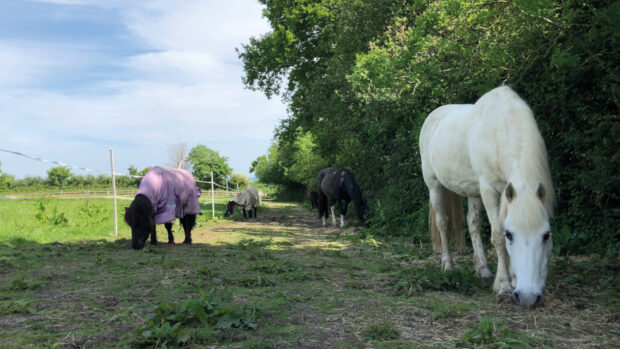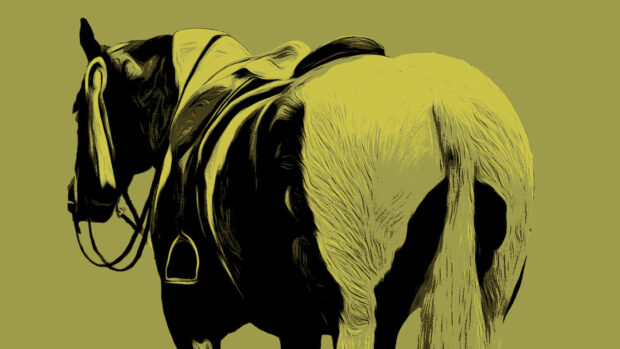Carrying too much weight can put a horse’s health in jeopardy, causing a strain on his joints, heart and respiratory system. However, while we continue to place our own feeding ideals on our horses, they will continue to be overweight.
Horses evolved to roam for around 18 hours a day, grazing rough, scrubby vegetation. In domesticating the horse, humans have not only deprived him of his freedom, but feed him two or three square meals a day,as well as providing an endless supply of hay and grass. It is no wonder that the equine population is also becoming obese.
Take the following six points into consideration when you are feeding an overweight horse. But, be patient, weight loss won’t happen overnight.
1. Weigh your horse
Encourage your yard or riding club to hold a “weigh-in clinic” with an equine nutritionist. Most feed companies will bring out a portable weighbridge, weigh your horse and provide a suitable computerised diet plan. This valuable service is often free of charge if there are adequate numbers present.
Alternatively, invest in a weigh tape. “Weigh” your horse once or twice a week, preferably first thing in the morning, as he may be bloated in the evenings if he has been turned out all day eating grass.
2. Weigh your feed
There is no such thing as an average-sized feed scoop. By weighing out a level scoop of each product you feed, you will be accurate, as well as saving yourself money. Don’t forget to weigh your hay.
3. Feed plenty of fibre
Provide a mainly fibre-based concentrate ration in the form of low molassed fibre chaffs or high fibre cubes. Avoid high energy feeds unless you have a really lazy horse.Add a good broad spectrum supplement if you are not feeding much concentrate feed.
4. Limit grass intake
Grass is the best weight gain feed of all. Even poor quality grass will have a higher nutritional value than hay, so be warned.
There are several different ways to restrict your horse’s grass intake:
- Graze your paddock with sheep in order to shorten the grass.
- Strip grazing can be effective, as can turning your horse out in a starvation patch, but remember thatthe grass which is growing will still be good quality.
- Alternatively use a well fitted bucket muzzle when turned out during the day and stable the horse at night with hay.
5. Limit hay intake
Buy clean hay which was cut latein the season as this will provide a lower nutritional value. Do not feed poor quality hay. Alternatively, mix your hay with some good quality barley or oat straw to provide a low calorie filler.
Use a small holed hay net, or alternatively put a hay net inside another so that your horse has to take smaller mouthfuls, resulting in his haynet lasting longer.
6. Plan an exercise regime
Increase your horse’s metabolic rate through exercise. Horse walkers are ideal if you have accessto one, otherwise, take him for longer hacks or school for an extra five minutes.
If you are short of time, advertise for someone to share the riding with you, or if your horse is kept at a livery yard or a riding school, allow him to be used for lessons to help keep his waistline trim.



